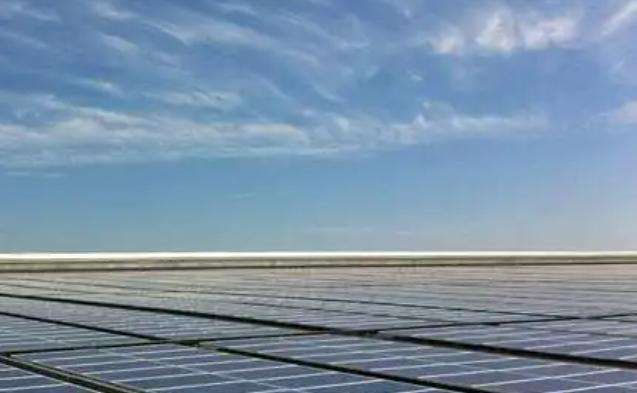Principle of amorphous silicon solar cell
Amorphous silicon solar cell is a new type of solar cell. It uses amorphous silicon material as the positive electrode of the battery, carbon material as the negative electrode of the battery. , and the oxidation of zinc is used as the electrolyte and glass is used as the outer shell.
When sunlight irradiates an amorphous silicon solar cell, the ultraviolet and visible light from the sunlight will be absorbed by the amorphous silicon anode, generating electrons and holes. Electrons and holes will flow between the anode and cathode. . Migrate between them to form an electric current, thereby generating electrical energy.
In addition, amorphous silicon solar cells also have good heat resistance, corrosion resistance and ultraviolet resistance, can work stably for a long time, have along lifespan, high efficiency and low cost, making it an ideal solar system. battery.
According to the British weekly report "New Scientist", at the academic conference on materials research in San Francisco in early April 1997, Christopher Wronsky, a researcher at the University of Pennsylvania, presented a new low cost solar panel. . This could be a commercial breakthrough.
Today, most solar panels are made from crystalline silicon. But recently, three companies, including Japan's Canon, Solarex of Pennsylvania and Solar System United of Michigan, launched a panel made of amorphous silicon, a cheap and easy-to-process material.
The principle of silicon battery is: silicon absorbs photons from sunlight and directly converts light energy into electrical energy. Photoelectric conversion efficiency of cellsthe general crystalline silicon is only about 12%. The photoelectric conversion efficiency of amorphous silicon cells is lower, and the longer they are used, the worse the effect. This phenomenon was discovered by two solar cell experts, one named Stabler and the other Wonsky. This is why it is called the Stabler-Wronsk phenomenon.
Scientists believe that this phenomenon of amorphous silicon is partly due to the fact that some silicon atoms do not have electrons in their bonds and thus absorb some free electrons by light irradiation. , the chemical bonds of silicon atoms are unstable, which affects the stability of the battery and reduces the photoelectric conversion efficiency by 30%. In other words, light irradiation will reduce the efficiency of the battery panel.
After several years of work, researchers have now found a way to limitter this phenomenon. One is to fill the silicon made of the battery caps with hydrogen to eliminate some unstable chemical bonds; the other is to use a thin layer of silicon, because a thinner layer of silicon can make it easier for electrons to escape. Energy to absorb broad-spectrum multilayer silicon to improve the photoelectric conversion efficiency of the battery. If a trace of germanium is added to silicon, it can absorb light with a longer wavelength. The photoelectric conversion efficiency of amorphous silicon cells manufactured by combining the above methods can reach 14.6%. Even after 1,000 hours of use, it can still reach 13%.














